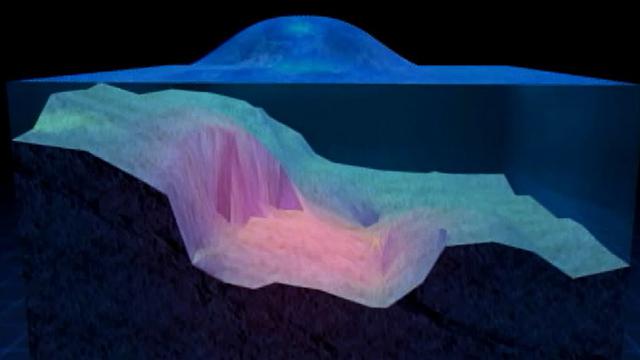Tokoha University Professor Ikuo Abe, an expert on tsunami and disaster prevention, visited a temple in Numazu, Shizuoka Prefecture known to possess some puzzling historical records on tsunami.
The documents indicate that in the 15th century, the area was hit by tsunami that reached 11 meters above sea level. That's much higher than the maximum 5-meter tsunami that Shizuoka Prefecture has projected in studies conducted after the March 11th disaster.
Abe says he believes the 15th-century tsunami was not the result of a normal earthquake. He says a massive localized tsunami most likely occurred, possibly due to a landslide on the seabed that was caused by the quake. A mass collapse of soil in this kind of landslide can cause seawater to swell and produce a tsunami.
Signs of a submarine landslide are visible 5 kilometers east of Yaizu City, Shizuoka prefecture. It was caused by a quake in Suruga Bay 9 years ago. The city recorded a tsunami that was higher than any thought to be possible based on the scale of the temblor.
Professor Abe reproduced the effects of submarine landslides that could be triggered by a mega quake in the Nankai trough, off central and western Japan. There's said to be an 80 percent probability such a quake will strike in the next 30 years. Abe simulated landslides in 4 parts of Suruga Bay, and found that tsunami more than 10 meters high could hit Numazu, Yaizu and other areas. The height roughly matches the records kept at the temple in Numazu. The study also showed that in the worst-case scenario, the Miho peninsula, famous for its pine trees, could be completely flooded.
The Chishima trench off Hokkaido is another site where a mega quake could strike in the near future. Abe found that a massive submarine landslide there could produce tsunami of around 15 meters in Miyako City in Iwate Prefecture and Hachi-nohe in Aomori Prefecture. He warns that even higher waves are possible if the landslide coincides with regular quake-induced tsunami.
Abe says parts of the Sea of Japan are also vulnerable to submarine landslides. This includes areas off Ishikawa and Tottori Prefectures, and Kyoto Prefecture's Tango Peninsula. He says authorities need to look at measures to prevent the kind of devastation inflicted on northeastern Japan -- a disaster that people simply didn't anticipate.
Abe says residents could be advised to evacuate to areas higher than the shelters that are now being considered. He says it's essential that people reconsider what they need to do to survive a tsunami.
